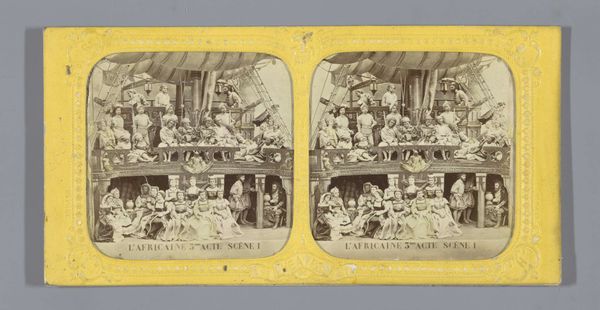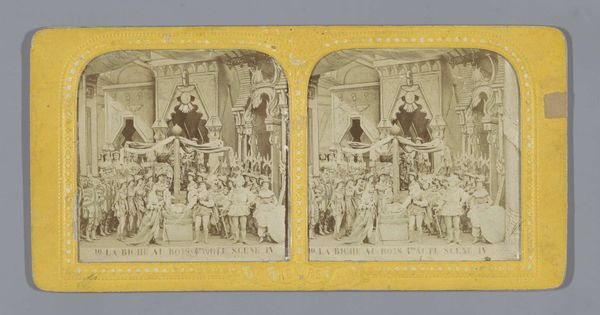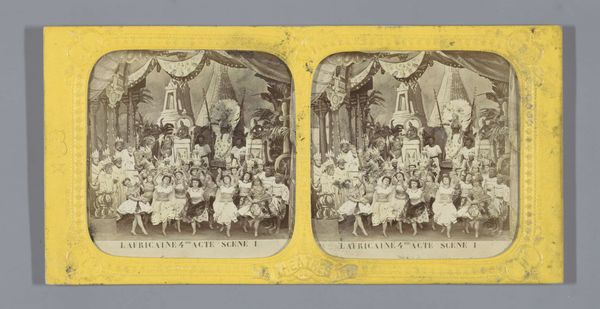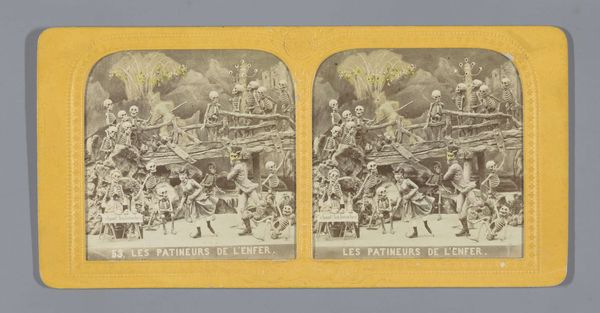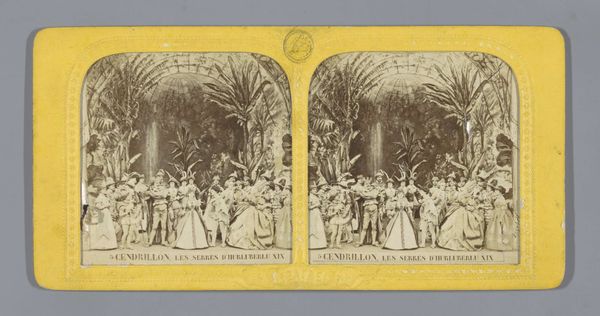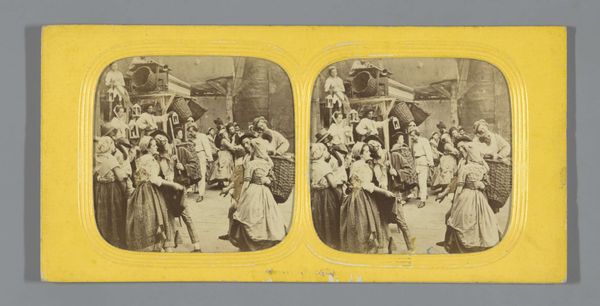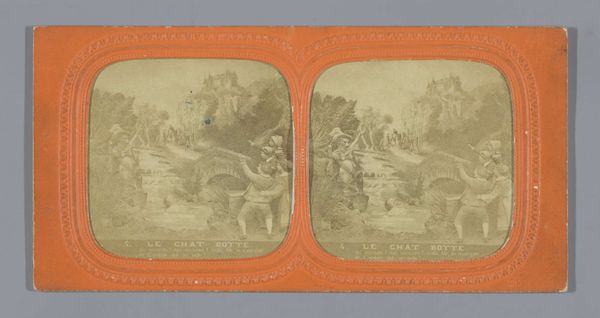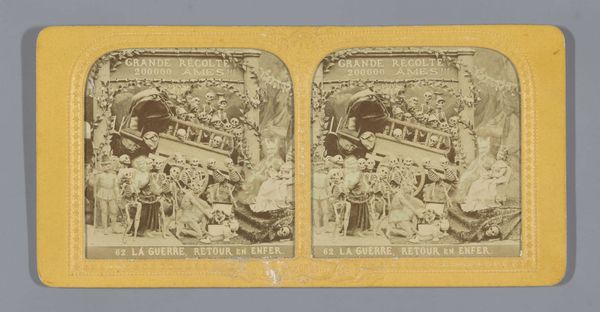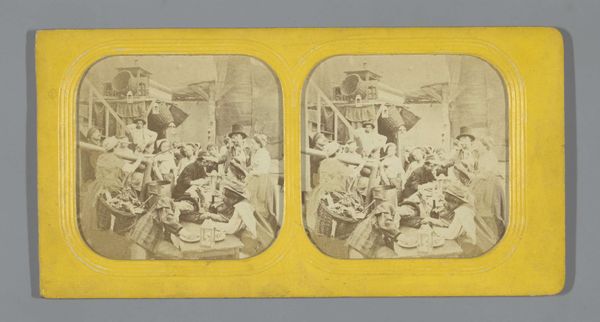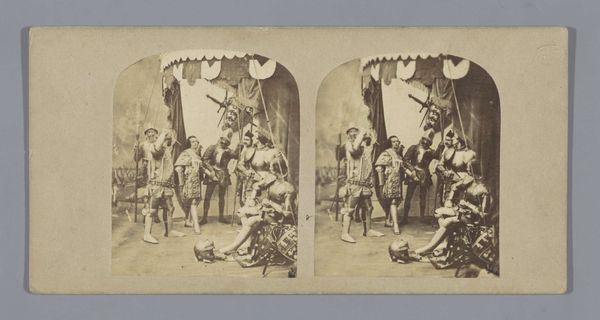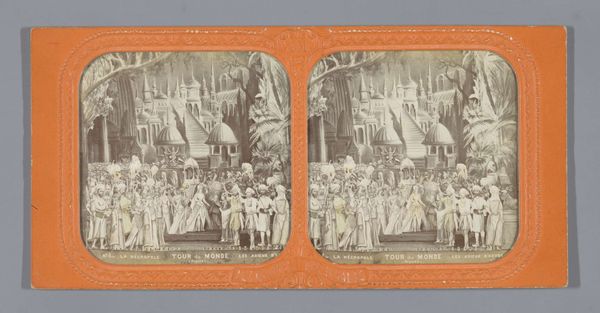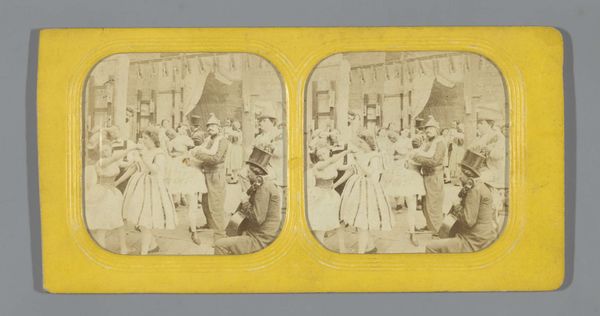
Dimensions: height 86 mm, width 174 mm
Copyright: Rijks Museum: Open Domain
Curator: Welcome. Before us is an intriguing stereoscopic print from between 1873 and 1874, housed right here at the Rijksmuseum. Its title: "Third act, fourth scene of L'Africaine." Editor: It feels very staged, almost like a theatrical tableau vivant captured on a fragile piece of card. The greyscale palette and tight composition give it a kind of romantic urgency, almost claustrophobic, doesn’t it? Curator: Yes, and let's delve deeper into that sense of staging. It's representing a scene from Meyerbeer's opera, "L'Africaine," which, though popular, is now heavily criticized for its colonial and racial representations. The ship setting and the costuming carry the visual language of exoticism very explicitly. What might this scene portray in terms of character relationships and power? Editor: Precisely! The symbolism here is really tangled. On the one hand, the theatrical setting underscores the artificiality of the racial and cultural stereotypes it’s portraying. We have to ask how this reinforces certain power dynamics, certain hierarchies within the context of colonialism, through art. This scene likely depicts European perceptions, probably wildly inaccurate, of the so-called "African" experience, further Othering them. Curator: Good point. Also, note the visual density; how figures are layered and crowded. Think of the ship as not just a vessel but a visual symbol laden with history. In historical iconography, ships represent the perilous journeys of human souls and have also meant commercial exchange or forced relocation. The layering evokes both potential instability and imposed societal order. Editor: Exactly. It’s a romantic interpretation with a colonial aftertaste. Even in the composition, where is the implied audience? Is it Europe consuming an exotic spectacle, safely distanced and empowered by their gaze? Whose story is truly being told? I would argue the print unconsciously centers white colonial perception. Curator: Absolutely. Thank you for contextualizing the emotional and sociocultural burden embedded within this seemingly picturesque scene. The image isn't passive; it invites questions about representation, about the relationship between opera, theater, and historical power structures. Editor: An invitation we desperately needed. It has brought into focus the need to dissect such romanticized views of colonialism that continues to echo to this day.
Comments
No comments
Be the first to comment and join the conversation on the ultimate creative platform.
